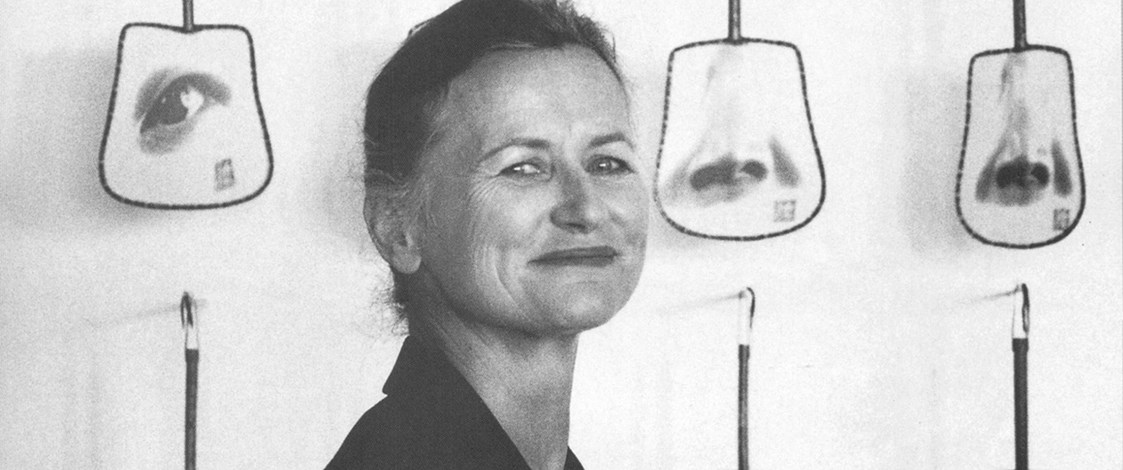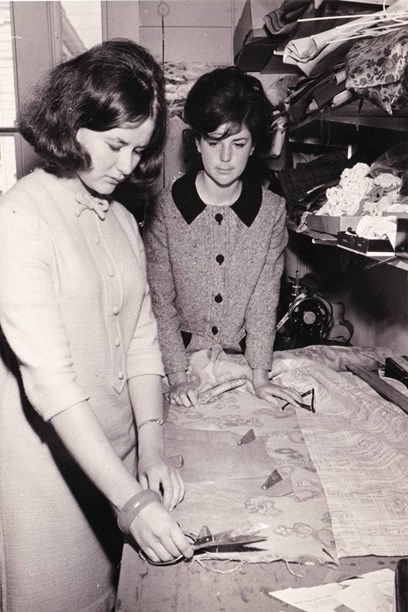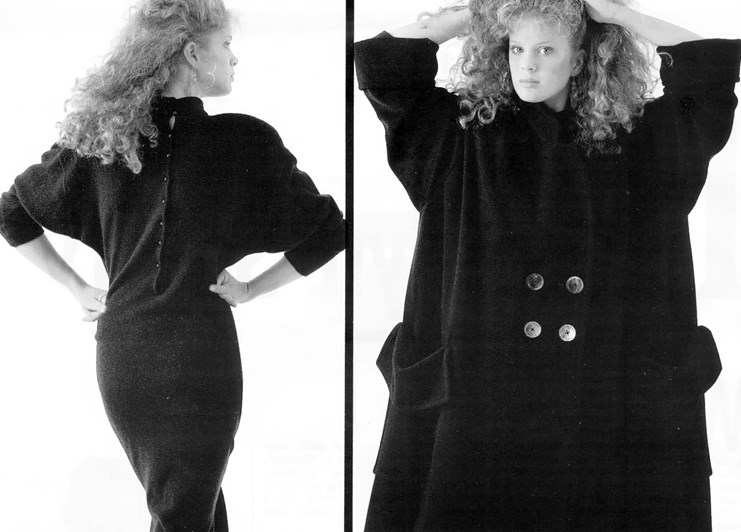Stories
Marilyn Sainty
1974-2005 (label)

Marilyn Sainty describes her generation as "the lucky one" that "could do anything". The products of what Marilyn chose to do – "to create what was missing" – are precise, elegant and often witty garments that both reflect and transcend the dates of their creation.
That her clothes reflect a time but are not anchored in trend, results in part from Marilyn's design drive: "I was always interested in making wearable clothes that had some strength about them, that were exaggerated in some subtle way."
In 1967, 19-year-old Marilyn left New Zealand to live in Sydney. Her sister, Val, was working in the city as a window dresser for the fashion-forward boutique chain In Shoppe. Marilyn had already begun to design and sell a few items, some of which her sister wore. In Shoppe's owner, David Sheinberg, liked one of these garments and asked Val where it came from. Marilyn applied for a job and "before I knew it, I was working there too."
Although Marilyn was hired on the strength of her design, the practice at In Shoppe was to study and reproduce the latest fashions from London and Paris, which David sourced through international contacts and regularly imported. Access to these was inspirational, but original designs by Marilyn and her colleagues were rarely put into production. Even though her own designs were not realised at In Shoppe, the experience allowed Marilyn to hone the workroom skills she had gained while working for Elle Boutique owner and designer Wendy Ganley (later Hall) in her hometown of Hamilton.

Marilyn Sainty (left) and Wendy Ganley in the Elle workroom in the 1960s. Image © Wendy Hall.
Before reaching her two-year anniversary with In Shoppe, Marilyn was approached by Sydney aquaintance Joan Mostyn, with the idea of joining her in business. Joan's plan was to open a fashion boutique that her husband would finance. Marilyn seized the opportunity and, in 1968, Starkers fashion boutique opened stocked with styles for Spring/Summer 1968–1969.
Joan managed the business side of Starkers and Marilyn, a part-owner, was sole designer. The third partner was fellow New Zealander Valerie Dean, also Marilyn's sample machinist. The business proved very successful; they repaid Joan's husband within a year.
Her occasional use of hand-printed textiles set Marilyn apart from many of her more commerical rivals. The fabric was expensive but incorporating it into her design imparted an artisanal quality – a handcrafted element that would become a defining feature of her garments.
From Sydney, in 1971, Marilyn took a work trip to Paris, London and New York. The travel was both inspiring and unsettling because it opened up new opportunities. "Feeling brave," Marilyn says "I considered going to work in Europe." This combined with the fact that her sample machinist had left work with a new baby, led to the closure of Starkers. "It just wasn't the same." After almost six years working in Sydney, Marilyn returned to New Zealand.
Her first stop was Hamilton, where she designed collections for Elle Boutique before deciding, after a year, to move to Auckland. While she was flatting in Freemans Bay and still seriously considering working overseas, Marilyn's mother became unwell. "I ended up buying a house and staying here and working. It was probably for the best. It would have been quite hard for me in England."
In 1974, aged 27, a now experienced Marilyn started out on her own. She began modestly, working from home designing and making t-shirts that featured subtle art deco-inspired prints. "I just started. There were no t-shirts around so I started making them. Then I made a dress out of t-shirt fabric. In those days I made what I like, put it in a box and sent it to different stores." These sold well through Auckland boutiques, including London Affair Boutique, which was where Marilyn met her future business partner Sonja Batt.
Over the next few years, Marilyn and Sonja developed a solid business relationship and in 1979 they transformed Sonja's Chez Bleu retail outlet into the first Scotties boutique, celebrating the launch with a fashion show at Auckland's chic Club Mirage. Initially, Marilyn's designs were supplemented with those of other Auckland designers. As the business became more organised, Marilyn felt compelled to produce a collection, which was something she "always found really stressful and difficult".
In the early 1980s, Marilyn was enamoured with Italian fashion, and Scotties' first imported label was that of Italian designer Romeo Gigli. However it wasn't long before Marilyn became intrigued and beguiled by the deconstructed and anti-conventional fashions of the cutting-edge Japanese designers. She recalls seeing Kawakubo's Comme des Garçons clothes for the first time on a trip to Sydney with Sonja. "I couldn't believe it! I thought they were the most amazing things I'd ever seen."
It was after this that Sonja and Marilyn began to travel regularly to Japan to source fabrics and seek inspiration. Over the following decades, Marilyn's interest in international fashion and her openness to innovative and relatively new designers was reflected in the list of labels stocked by Scotties.

Rachel Hunter models two Marilyn Sainty garments made from Italian fabric. Image © Marilyn Sainty.
Marilyn has always been extremely generous in her support of new artists, designers and craftspeople. Her canny ability to attract like minds means that her work with emerging artists is just as accomplished as that she engages in with established practitioners, many of whom Marilyn has worked with for years.
In 2005, Marilyn announced her retirement from making clothes. At the time she explained that she wanted to "grow trees and make furniture". However, as some anticipated and many hoped, Marilyn has not quite stopped designing. "I've been sort of phasing out; you know how you do. You sort of phase out because you can't just stop."
Text by Angela Lassig from New Zealand Fashion Design, published by Te Papa Press. Banner image © Deborah Smith.
Last published December 2014.